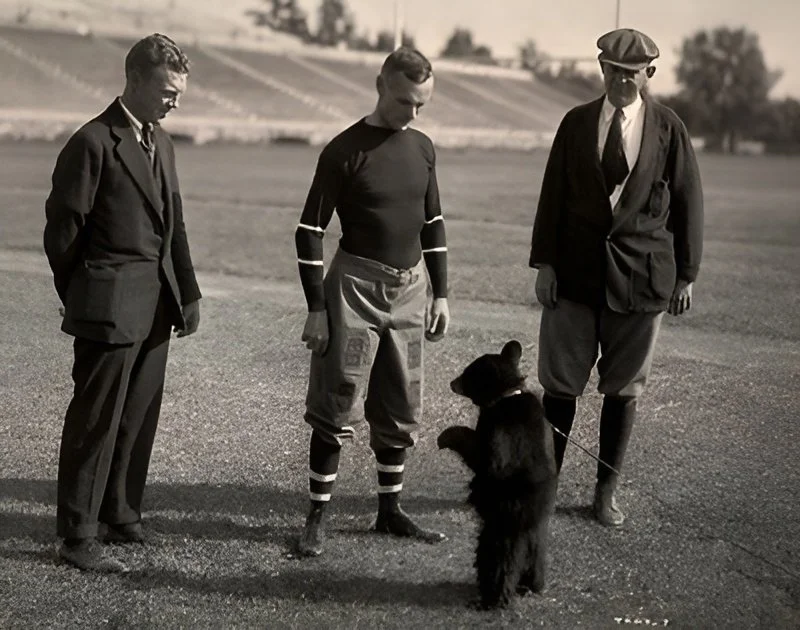Bears, Coyotes, and Beavers: Investigating the Diversity of Animal Life at Cornell
Written By Andy Ramnauth
Edited By Grace Koch
This semester has seen more than its fair share of wildlife encounters– from a wild Coyote to skinned bears and beaver sightings across the Ithaca campus. This abundance of awe-inspiring creatures, however, isn't by any means a novelty in rural Ithaca. Reports of animal sightings can be traced back to the early 1900s, most notably the iconic live black bear cub, Touchdown.
Touchdown the bear, before the friendly human costume, was an energetic live American Black Bear cub. Cornell’s athletics department managed 4 generations of adorable cubs before deciding that the mischievous mascot was better off symbolically represented by a costume. Touchdowns frequently got into trouble. On an athletic trip to Atlantic City, the first touchdown (who admittedly didn’t enjoy mornings) ended up breaking into a taffy shop, rummaging around before making a run for the ocean. If that wasn't enough chaos, in a feat of unparalleled patriotism, Touchdown whacked the UPenn’s husky mascot in a 1915 game. The final straw was when the fourth generation of Touchdown created quite the scene at a nightclub in Cleveland. After the Football team won an away game, he reportedly made guests uncomfortable, prompting the local humane society to take touchdown away. The beloved mascot did not return with the team the following day and was replaced by the furry costume we see now.
Photos by Cornell University. Curated by Maddie Rhodes (mgr84@cornell.edu).
Cornell not only has animals for recreation but also features agricultural use animals. Cornell’s extensive involvement in agriculture has led to animals, including llamas, horses, sheep and cows being featured. CALS fest brings all of these together on the Ag Quad. One notable celebrity at the annual event is the fistulated cow, Blossom. The fistulated cow is simply a cow with a port into the rumen of its stomach. This allows for students to insert their hand into the stomach of the animal to observe the rumen environment. The cow has also provided fantastic inspiration to young children; it was featured in the 2018 Cornell Bring a Child to Work Day where staff could invite their children to experience campus.
In addition to agricultural life, Cornell has also experienced what it would deem pests on campus. A rather depressing example is the story of the two beavers that moved into Beebe lake around March of 2025. Cornell Botanical Gardens argued that these two beavers were reportedly injured and thus were set to be euthanized. However, students visiting the lake often noticed the beavers swimming and relaxing under the bridge appearing healthy. The likely reason the university is taking such extreme measures with the beavers is due to the reported indication of new beaver dams which can cause flooding or reroute water, especially problematic given the existing Beebe lake dam. As of March 28th the beavers were still alive however their current condition is unknown. In the future, there are sure to be several more unique animal adventures on the Cornell campus.
Andy Ramnauth’ 27 is in the College of Agriculture and Life Sciences and can be reached at ar2339@cornell.edu.


